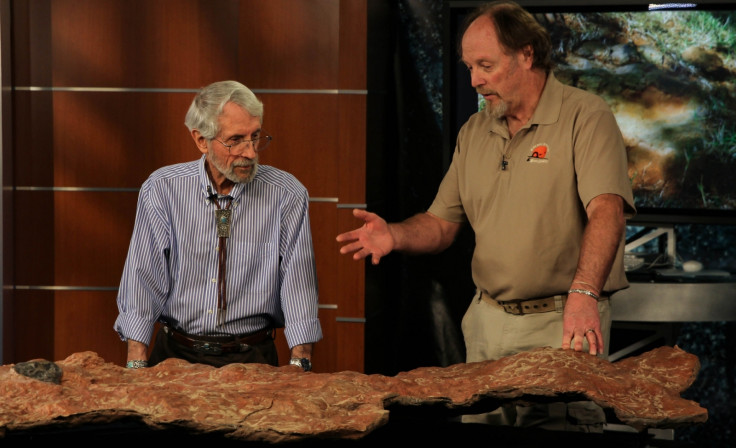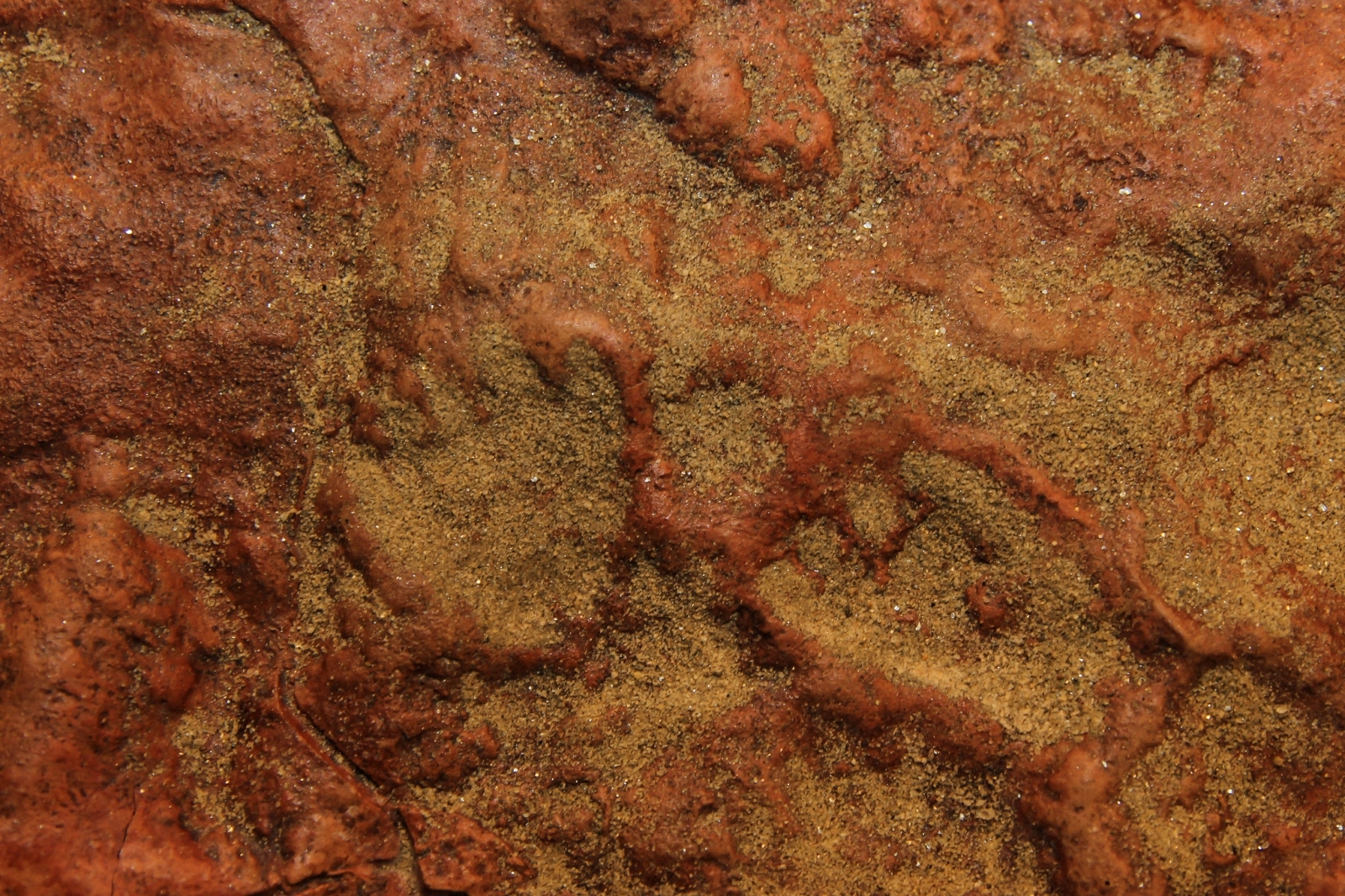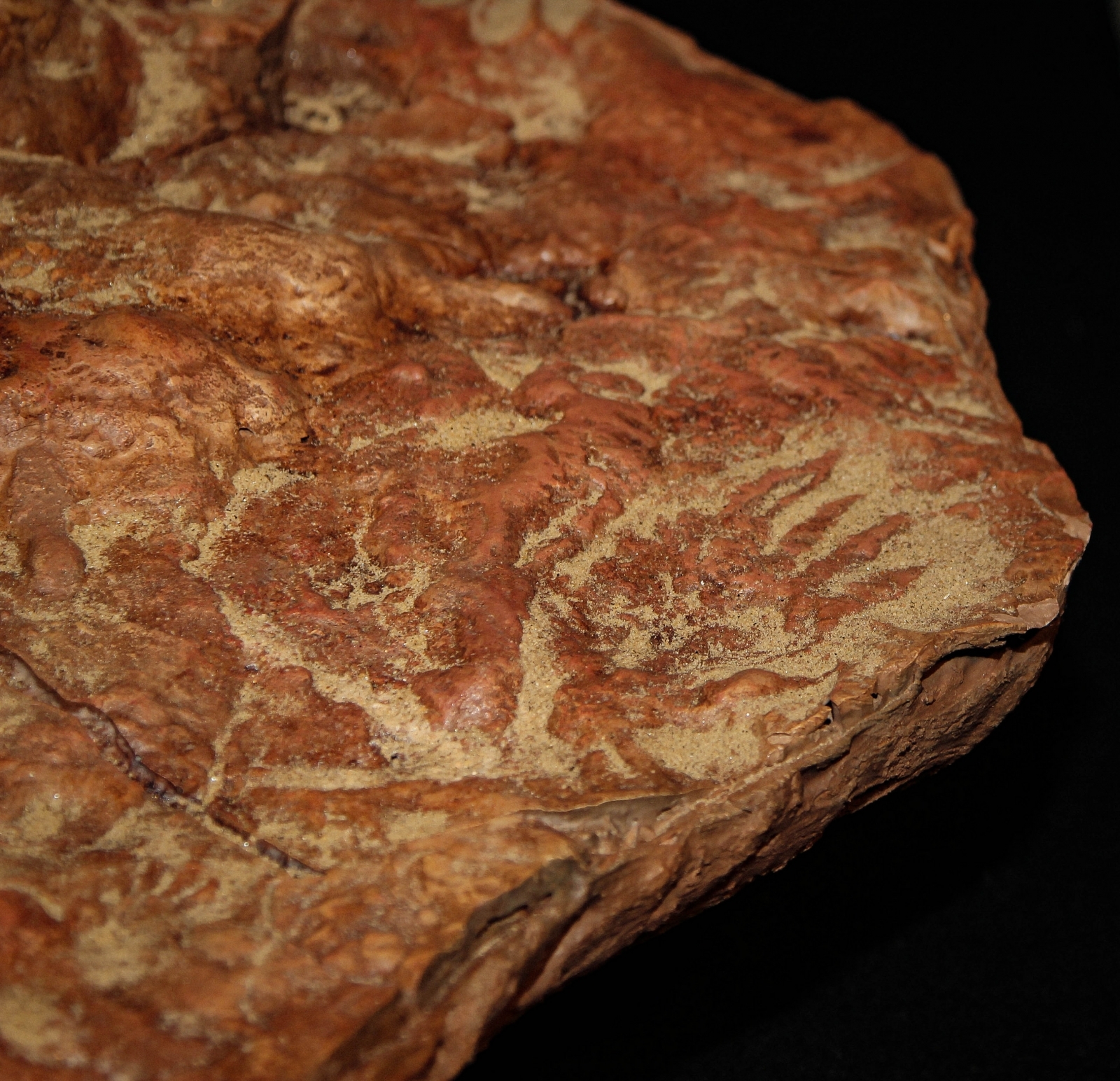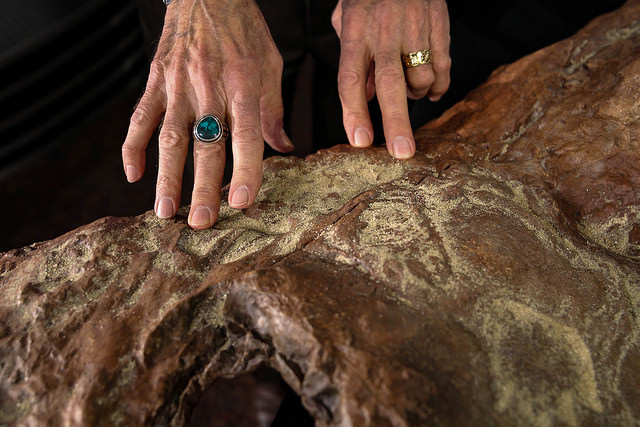100-million-year-old dinosaur and mammal footprints found at Nasa space flight centre
The slab of rock, nearly as big as a dining table, tells how mammals and dinosaurs interacted in the Cretaceous era.

In much of a surprise, more than 70 ancient dinosaur and mammal tracks have been found on a slab of rock unearthed about six years ago from Nasa's Goddard Space Flight Center in Greenbelt, Maryland.
The discovery, recently published in Scientific Reports, not only shows the interaction between different animal species more than 100 million years ago but could also give new insights into their prehistoric world.
The ancient slab of rock was found in 2012 when Ray Stanford, a local dinosaur expert, was returning after dropping his wife at the Nasa research facility. On his way back, Stanford spotted a weird outcropping just behind his wife's building and went ahead to have a close look. Soon enough, he figured that he was looking at a 12-inch wide dinosaur track.
Prompted by the remarkable discovery, he unearthed the 8ft long slab, almost as big as a dining table, and started analysing it. Over the next few years, he discovered that the rock didn't just have one, but 70 tracks of eight animal species that thrived during that period — dinosaurs and squirrel-sized mammals.
The print that Stanford spotted was of a nodosaur, an animal nearly as big as a four-footed tank, while just under and next to it were smaller footprints that suggested the group of an adult and baby nodosaur could have been travelling together.
The paper also details footprints of long-necked sauropods, crow-sized carnivorous theropods and flying pterosaurs on the rock.
The whole thing gets way more interesting, thanks to the tracks of mammals, with some appearing in pairs. In total, 26 mammal tracks were found on the rock. Most of these belonged to squirrel-sized animals but one went beyond normal and was four inches square, nearly as big as a Racoon's footprint. This is also the largest ever mammal footprint discovered from the Cretaceous era — the geological period spanning from 145 to 66 million years ago.
"The concentration of mammal tracks on this site is orders of magnitude higher than any other site in the world," said study co-author Martin Lockley.




The presence of so many prints has led the researchers to believe that they were in a typical feeding zone where mammals were chasing worms and grubs while the dinosaurs were chasing mammals and other smaller reptiles. Some tracks even suggested that the mammals took a break to sit on their haunches.
"It's a time machine," Stanford said. "We can look across a few days of activity of these animals and we can picture it. We see the interaction of how they pass in relation to each other. This enables us to look deeply into ancient times on Earth. It's just tremendously exciting."
The researchers hope further study and comparison of the slab with other ancient fossils could give them more insights about the pre-historic world in which these animals thrived.
Nasa scientist Compton Tucker, who helped with rock excavation said, "People ask me, 'Why were all these tracks in Maryland?' I reply that Maryland has always been a desirable place to live". Although, at that time, it would have been a much hotter place than what we see today.





















